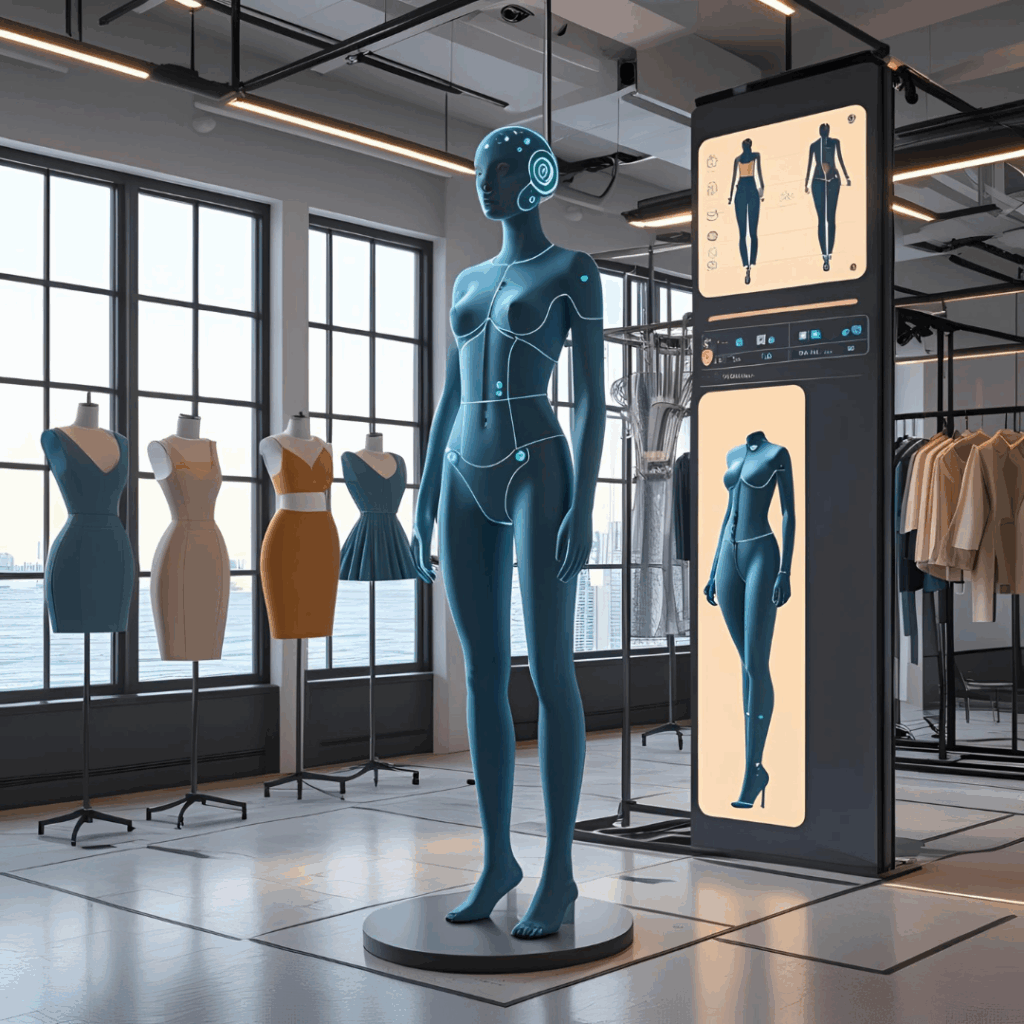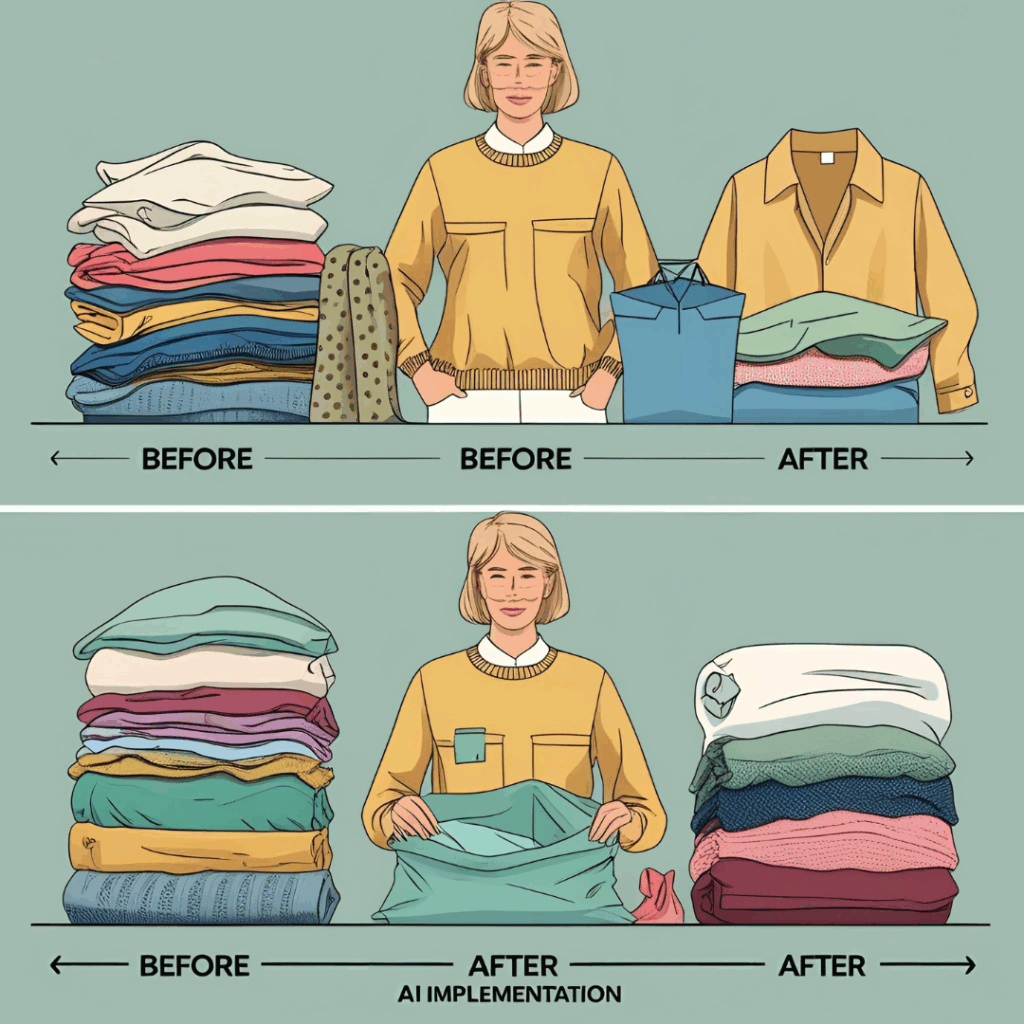The fashion industry is undergoing a profound transformation. Once synonymous with fast cycles, mass production, and unsustainable practices, fashion is now facing growing pressure to reinvent itself in the name of environmental responsibility. One of its biggest challenges? Textile waste.
According to the Ellen MacArthur Foundation, the equivalent of one garbage truck full of textiles is landfilled or burned every second. This alarming figure not only represents a tremendous loss of resources but also contributes to the growing climate crisis. To combat this, fashion brands are increasingly turning to an unlikely ally: artificial intelligence (AI).
By harnessing the power of AI across their supply chains — from demand forecasting to automated fabric cutting and personalized design — brands are making significant strides in reducing textile waste. This technological shift is not only making fashion more efficient, but also more sustainable.

Smarter Demand Forecasting: Producing What Will Actually Sell
One of the primary sources of waste in the fashion industry is overproduction. Brands often create more items than they can sell, resulting in unsold stock that eventually ends up in landfills or discount bins. Historically, demand forecasting has relied on seasonal intuition, past performance, and manual spreadsheets — methods prone to inaccuracy.
AI is changing that.
By analyzing vast amounts of data from past sales, weather patterns, social media trends, customer preferences, and even influencer activity, AI-powered platforms can accurately predict which products are likely to sell, when, and in what quantities. This level of precision allows brands to significantly reduce surplus production.
For example, fashion tech startup Edited uses real-time data analytics to help brands identify emerging trends and optimize inventory decisions. Similarly, Stitch Fix, an online personal styling service, employs AI to curate clothing selections for individual customers, reducing inventory misalignment and excess.
This data-driven approach not only minimizes waste but also improves profitability and customer satisfaction — turning sustainability into a smart business move.
Automated Fabric Cutting: Maximizing Efficiency, Minimizing Scraps
After demand forecasting comes production — and here too, AI is making a significant impact. Traditional fabric cutting, often done manually or semi-automatically, results in substantial material waste. Patterns are laid out inefficiently, leading to offcuts that are discarded despite being perfectly usable.
With AI-driven cutting technologies, brands can optimize how fabric is laid out and cut to maximize material utilization. These systems analyze the dimensions and shapes of garments to find the most efficient cutting patterns in real time, reducing waste by up to 30%.
Companies like Lectra and Gerber Technology have developed automated cutting machines integrated with AI algorithms. These machines can adapt cutting strategies on the fly, reducing the need for buffer fabric and ensuring greater consistency and accuracy in garment production.
In addition to reducing textile waste, automated cutting systems also boost production speed, reduce labor costs, and minimize human error — all while aligning with eco-conscious manufacturing standards.
On-Demand Design and Manufacturing: Redefining Personalization
One of the most exciting applications of AI in fashion lies in design and personalization. Instead of mass-producing garments based on trends that may or may not sell, AI enables on-demand creation — designing and manufacturing only after a customer expresses interest or places an order.
This approach is particularly effective when paired with data-driven design tools. Platforms like Vue.ai and Heuritech use AI to generate insights about consumer preferences based on social media behavior, browsing patterns, and past purchases. Designers can then create products that are more likely to resonate with their target audience — and only manufacture them once a clear demand has been established.
Moreover, AI-generated fashion design is becoming increasingly sophisticated. Algorithms can suggest color palettes, patterns, and silhouettes tailored to specific customer segments. Some tools even allow for co-creation, where the customer collaborates with AI to design their own unique pieces.
By producing only what consumers actually want — and avoiding overproduction — fashion brands are not only cutting costs, but also drastically minimizing waste and reducing their environmental impact.
Real-World Case Studies: Brands Leading the Way
Several fashion brands have already embraced AI in their efforts to fight textile waste:
- Adidas launched its Speedfactory initiative, using AI and robotics to enable on-demand, localized production. Although the project was later restructured, it demonstrated how AI could power responsive, low-waste manufacturing systems.
- Zalando, a European online fashion retailer, uses AI to personalize its recommendations and optimize supply chain operations, improving stock management and reducing unsold inventory.
- Unspun, a denim brand, uses AI and 3D body scans to create custom-fit jeans. Each pair is made only after the customer orders it, completely eliminating the guesswork of sizing and inventory forecasting.
- The Yes, an AI-powered shopping platform, builds individual style profiles for users and shows them products that align with their tastes. This targeted approach helps reduce returns — a hidden source of textile and packaging waste in online fashion retail.
These brands demonstrate how AI, when thoughtfully applied, can become a cornerstone of sustainable fashion innovation.

Sustainability, Profitability, and Brand Trust: A New Competitive Advantage
What makes AI such a powerful tool in reducing textile waste is that its benefits go beyond sustainability. Fashion brands that leverage AI effectively are also improving operational efficiency, enhancing customer experience, and gaining brand loyalty.
Today’s consumers — especially Gen Z and Millennials — are deeply concerned with environmental responsibility. A brand that transparently uses AI to minimize its ecological footprint can position itself as a forward-thinking, ethical choice. This not only attracts conscious consumers but also appeals to investors and partners who are increasingly favoring ESG (Environmental, Social, and Governance) aligned businesses.
Furthermore, governments and regulatory bodies are moving toward stricter standards on waste and emissions. Fashion companies that adopt AI now will be better prepared to meet future compliance requirements, avoiding costly penalties and reputational damage.
Looking Forward: AI as a Catalyst for Circular Fashion
While AI is currently being used to optimize production and reduce waste, its role in enabling circular fashion is just beginning. In the future, AI could help:
- Track and trace garments across their lifecycle for better recycling and reuse.
- Predict when clothes will wear out to enable timely repairs or resale.
- Analyze resale and rental data to inform more sustainable design choices.
By integrating AI into every stage of a garment’s life — from ideation to disposal — the fashion industry can move closer to a truly circular economy, where waste is not an afterthought but an opportunity.







